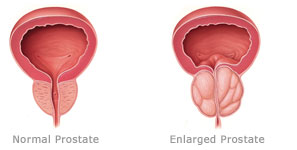Benign Prostatic Enlargement
—Specialisation

Benign prostatic enlargement has the other names like Benign Prostatic Hyperplasia, adenofibromyomatous hyperplasia. Benign prostatic enlargement, technically obstructs the free flow of the urine that passes from the bladder. The prostate gland that gets enlarged surrounds the urethra, which passes the urine through it. The result will be problem in urination.
BPH is found most common in most of the men, as they grow older. This condition is not considered as cancer, but the condition gets severe in the older age, after 75 years. Otherwise it is considered as a normal process as a part of aging.
There are certain myths about the progression of benign prostate cancer, about the possibility of the cancer. However, this is not true. This medical condition will not lead to the prostate cancer and it is also true that there will be no problem about becoming father as well as no problems related to the erection. There is also another myth that is contradicting to this myth. It is believed that regular ejaculation can prevent the possibility of the prostate enlargement. There are no scientific proofs to support these myths.
Causes
The major causes for the benign prostatic enlargement are aging, hormonal imbalance and also in the growth of the cells.Signs and Symptoms
As the benign prostatic enlargement obstructs the free flow of urine from the bladder, the following signs and symptoms are experienced by the patient.Struggle to get the free stream of urine to both start and completely stop. This condition is called dribbling.
The recurrent feeling of need for urination an this condition may result in waking up many times during the night.
Weakened urine stream
A sense of incomplete emptiness of the bladder
In a fewer cases, the condition also leads to block the bladder. So, the urination becomes extremely hard or even impossible. The condition finally leads to urinary retention or backed-up urine. The retained urine leads to damage the kidney, stones and bladder infections.
Diagnosis
Diagnosis of the benign prostate enlargement starts with the detailed discussion of the symptoms and also the general health condition of the patient. Physical examination is done after past health of the history is discussed. Based on the discussion, the following tests are conducted to diagnose the problem in detail.Urine test
Digital rectal exam to reveal the size of the prostate
PSA or Prostate Specific Antigen or PSA test to rule the presence or occurrence of the prostate cancer, because of the similar symptoms
Treatments Available
If the condition is in the initial stages, treatment can be started right from at being at home. In case the symptoms are light and do not bother the patient much, home treatment is suggested. With this treatment regular visit to the doctor is important as the progression or development of the prostate enlargement has to be monitored closely and regularly. It is important to note that the home treatment for benign prostate enlargement cannot stop it become larger, however, the symptoms can be controlled and reduced.
The home treatment recommends the following activities to be carried on regular basis.
Double voiding needs to be practised. The practise needs relax during the urination for a few moments and attempt to urinate again.
Avoid alcohol and caffeine completely, so that retention of more fluid in the body can be reduced to a better extent.
Avoid the medicine like decongestants, antihistamines that function as over-the-counter and lead to difficult urination.
On the other hand, if the symptoms, like bladder infection, backed-up urine or bladder stones do bother the patient much, the actual treatment will be started. In such complicated conditions, minimally invasive treatment followed by surgery are recommended by the doctor.
Initially, minimally invasive procedures are performed, followed by the relevant medications.
Prostatic stent insertion
Transurethral microwave thermotherapy
Transurethral needle ablation
Transurethral electrovaporization
Water-induced thermotherapy
High-intensity focused ultrasound
